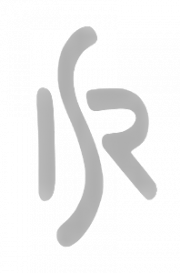| Acronym | SUMARE |
|---|---|
| Name | Survey of Marine Resources |
| Funding Reference | EU-FP5-IST-1999-10836 |
| Dates | 2000|2003 |
| Summary | The goal of SUMARE is to prove the utility of autonomous sensors for environmental monitoring, showing their efficiency in providing to the competent authorities the data required to guarantee a safe and sustainable exploitation of natural resources. Besides obvious savings in terms of time and costs associated with the use of oceanographic ships, autonomous sensors offer the possibility of: (i) adaptively selecting the regions to be sampled in response to observed data; The projects work program assesses the multi-disciplinary issues underlying these goals: environmental knowledge modelling, data fusion, sensing and guidance. Its results will be tested in two marine applications: (i) monitoring of the evolution of sand banks and The work program of the project is articulated around the main issues contributing to the design, implementation and use of autonomous intelligent sensors for monitoring applications. Use of existing knowledge concerning the macroscopic behaviour and physical constraints of a natural field can considerably increase data gathering efficiency, by enabling, in real-time, to use the measurements already acquired (or those of correlated parameters) to predict the most interesting or informative regions. For each application considered in the project, existing data, physical models and heuristic rules, will be used to identify mathematical prediction and extrapolation models for real-time guidance of the sensors. Moreover, monitoring efficiency is also increased by concentrating resources on optimizing those performance indexes that reflect the actual needs of the post-processing stages of the acquired data. The project will study the problem of translating specific user needs in performance criteria and associated observation strategies, with the following guideline: data does not need to be better than the requirements imposed by its ultimate utilization. To effectively use prior knowledge while optimizing relevant performance criteria, the sensors must have sensing modalities and guidance laws enabling on-line execution of adaptive observation strategies. The project will develop the advanced sensing and guidance techniques required by the two kinds of applications considered. Two true-size at-sea data acquisition campaigns will be used to evaluate the projects results in terms of facility of deployment, efficiency, accuracy, and cost. These campaigns will be conducted using two underwater platforms already existing in participating laboratories modified to fit their needs. The association to the consortium of a User Group, whose role is to follow its developments will provide critical input in terms of other application domains. |
| Research Groups |
Computer and Robot Vision Lab (VisLab) Signal and Image Processing Group (SIPG) |
| Project Partners | Institut Royal de Sciences Naturelles de Belgique - Unité de Gestion du Modèle Mathématique da la Mer du Nord (MUMM), Belgium, Heriot-Watt University - International Centre for Island Technology (HWU), UK, Centre National de la Recherche Scientifique Laboratoire Informatique, Signaux et Systemes (I3S), France, Thomson Marconi Sonar SAS (TMS), France |
| ISR/IST Responsible | |
| People |
[1] Maria Joao Rendas, Isabel Lourtie, Georges Pichot, "Adaptive Sampling for Sand Bank Mapping using an Autonomous Underwater Vehicle Equipped of an Altimeter", Proc. ISESS2003 - International Symposium on Environmental Software Systems, Viena, Austria, 2003


